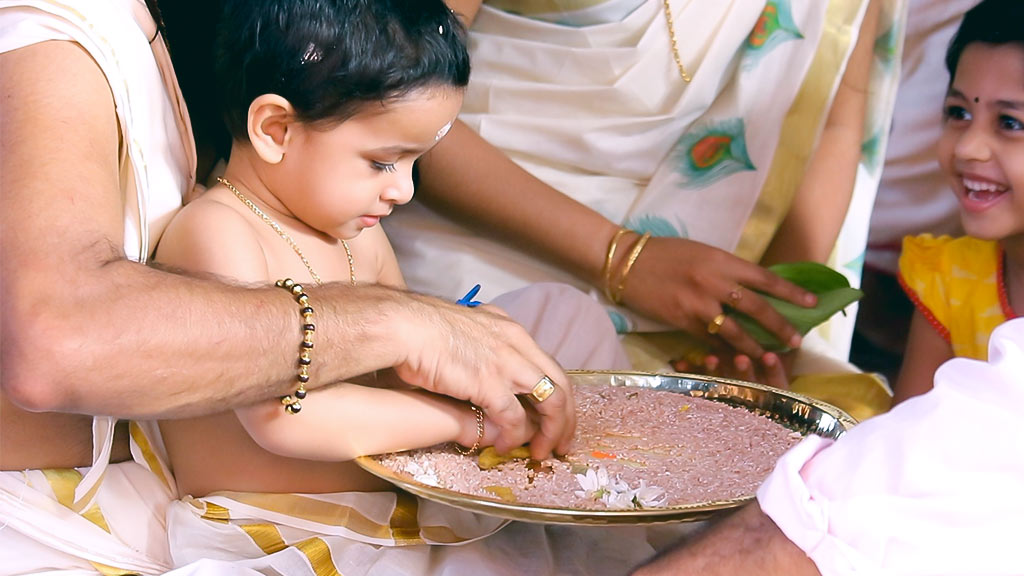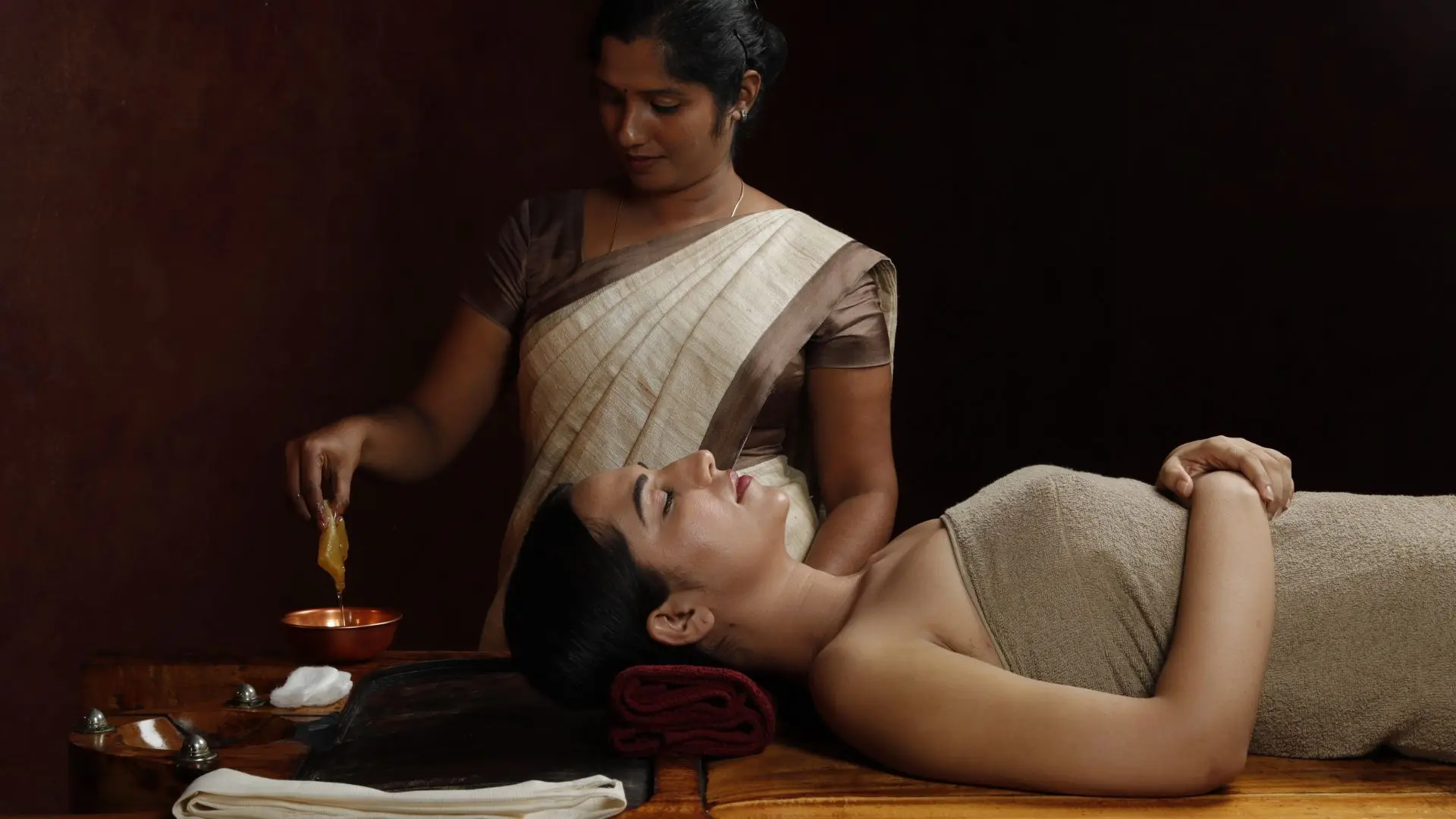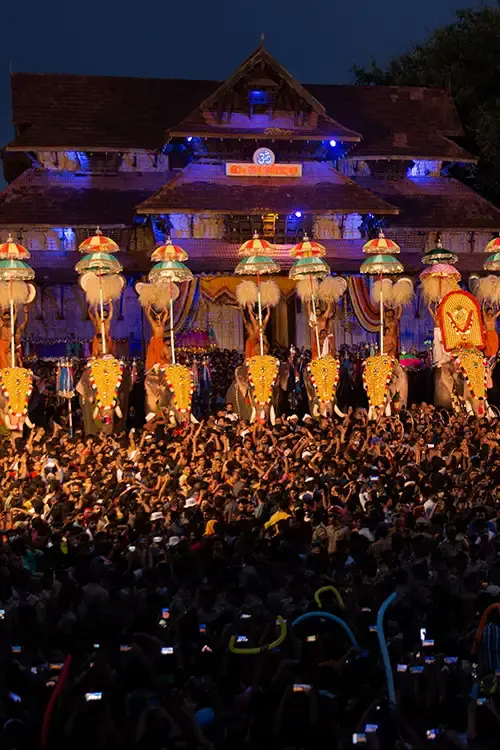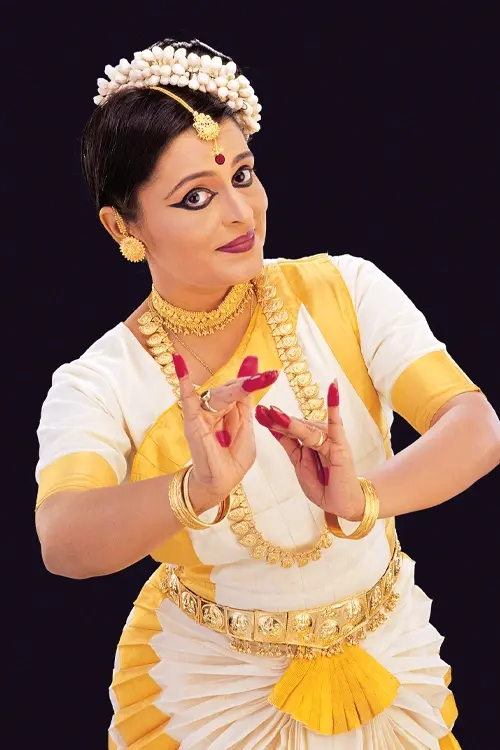Enchanting Kerala

Celebrating Nine Nights of Goddess
The festival of Navarathri (nava means nine and ratri means night) is celebrated in different parts of India. It is a festival of nine nights and ten days during which the nine forms of Devi (goddess) are worshipped.
In Kerala, the festival is celebrated with traditional gaiety and the tenth day of the festival is noted for the vidyarambham ceremony in which children are initiated to the world of letters. The intensity and involvement with which Navaratri is celebrated may vary from region to region; but the one celebrated in the village of Kodunthirapully in the Palakkad district of Kerala stands out. Here, the Navaratri celebrations assume a different colour, energy and presentation.
The village of Kodunthirapully, on the outskirts of Palakkad town, literally would come alive during the Navaratri celebrations. The agraharams (Brahmin houses) in the village become pretty active during the festival, the main venue of which is the Bhoodevi Sridevi Sametha Adhikesavaperumal temple.
Though comprising chiefly of members of the Tamil Brahmin community, the Navaratri festival at Kodunthirapully has a lot to do with the cultural fabric of Kerala. Elephants in traditional attire form part of the processions on all festival days. These processions locally known as ezhunellathu, usually feature a group of about 15 elephants. Colourful parasols, venchamarams (white tufts) and alavattams (ceremonial fan made of peacock feathers) add splendour to the processions. Providing vibrancy to the processions are the accompanying traditional orchestra – the panchavadyam (comprising five music instruments) and the unmatched percussion ensemble of the chenda called chendamelam. These processions and musical ensembles attract a large number of spectators who enjoy every bit of action.
It would be of interest to an outsider to find out how the festival of Navaratri is conducted in the village of Kodunthirapully. Unlike in other places of Kerala, where a committee takes charge of the conduct of festivals, here the task is assigned to groups of households. A group of nine or ten households are given the responsibility of conducting a day’s festival proceedings. Each group try its best to excel the other and this spirit is quite evident throughout the entire period of the festival.
During the days of the Navaratri festival, people visiting the temple are given prasadam (materials already offered to the presiding deity). Here, the prasadam on festival days is neyyappam (a type of local pancake made of rice and jaggery).






